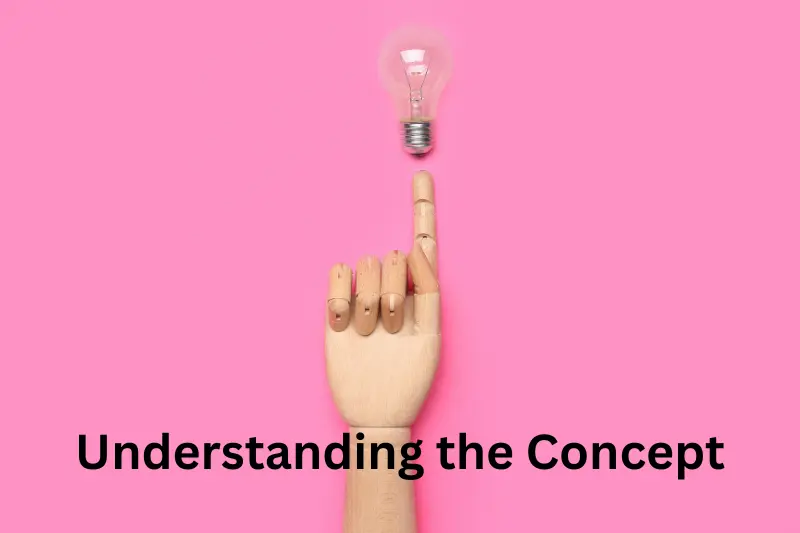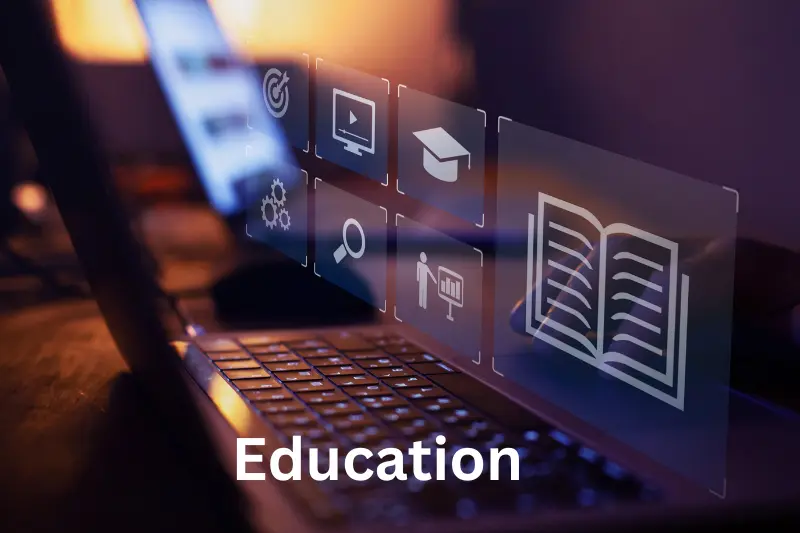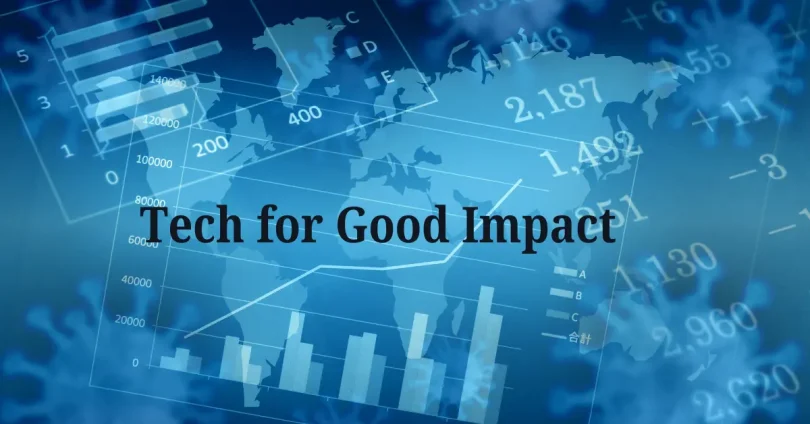In a world where technology is often associated with profit margins, rapid innovation, and massive disruption, it’s both refreshing and profoundly inspiring to witness how it can also serve as a force for compassion, unity, and transformative change. Beyond streamlining business processes or enhancing productivity, technology has evolved into a powerful tool for addressing real-world issues—creating equity, healing divisions, and providing opportunities in places where none existed before.
From under-resourced classrooms to natural disaster zones, innovations today are doing more than solving problems; they are shaping futures, restoring hope, and bringing light into some of the world’s darkest corners. This powerful evolution of purpose is encapsulated in the concept of the Tech for Good Impact.
Understanding the Concept

What Does “Tech for Good Impact” Mean?
It represents the deliberate use of technological tools and platforms with the explicit intent to generate social, environmental, and humanitarian benefits. Unlike traditional tech development, which often emphasizes market share or investor returns, this approach is guided by human impact.
While traditional technology often prioritizes commercial success and market expansion, this movement emphasizes long-term positive transformation. It is reshaping how we think about value and success in tech.
It touches a wide range of sectors, including but not limited to education, healthcare, environmental sustainability, accessibility, humanitarian relief, mental health, and inclusive development. This vast reach proves the adaptability of tech in serving the common good.
The core philosophy is human-centered—ensuring that technology works with and for the people, not just for profit. Compassion is embedded in its very blueprint.
Why Is It Gaining Momentum?
We are living in a time of unprecedented global challenges: climate change, wealth inequality, mental health crises, educational gaps, and access to clean water and healthcare. These crises demand innovative, scalable solutions.
Citizens, especially younger generations, are advocating for ethical, inclusive, and responsible technological advancements. Social media and activism are pushing the boundaries of accountability.
The rise of ESG (Environmental, Social, and Governance) investing has pushed startups and enterprises to align their missions with societal impact. Profit is no longer the sole performance indicator.
Governments, educational institutions, and NGOs are adopting tech solutions to enhance outreach, scale their operations, and measure impact more effectively. Data-driven decisions are leading to more impactful results.
Categories of Tech for Good Impact
Healthcare
Telemedicine & Remote Healthcare Access
Telemedicine is bridging the healthcare divide, allowing patients in remote villages and underserved urban areas to connect instantly with certified medical professionals. Geography is no longer a barrier to care.
AI-powered diagnostic systems now evaluate patient symptoms in real time, delivering accurate diagnoses even in regions with no nearby healthcare providers. This levels the playing field for health equity.
Smart wearables, from heart-rate monitors to glucose trackers, are giving individuals the power to manage chronic conditions proactively, alerting them to early warning signs that could save lives. Personal health monitoring has never been more accessible.
Cloud-based electronic health records are improving coordination among hospitals and clinics, reducing errors and saving valuable time. Healthcare is becoming more interconnected and efficient.
Mental Health Support
Mobile applications offer round-the-clock mental wellness support for issues like anxiety, PTSD, and depression. Support is now just a tap away.
AI chatbots provide empathetic conversations, helping individuals express feelings in a judgment-free environment. Technology is learning to listen without judgment.
Online therapy platforms connect users to qualified therapists, regardless of location or mobility restrictions. Therapy is becoming more inclusive and widespread.
Mood-tracking apps use data analytics to identify mental health patterns and recommend interventions. Self-awareness is now powered by AI.
Education

Digital Learning for All
Interactive e-learning platforms now replace outdated textbooks, offering engaging content for students globally. Education is evolving to match the digital age.
Initiatives like One Laptop per Child and solar-powered school kits are ensuring digital equity in resource-poor regions. No child should be left behind due to lack of access.
Youth in Africa, Asia, and Latin America are accessing free online coding bootcamps to gain in-demand tech skills. Opportunity is being democratized.
Adaptive learning platforms use AI to tailor education to individual students’ strengths, making learning more personalized and effective. One-size-fits-all education is becoming a thing of the past.
EdTech for Special Needs
Text-to-speech and speech-to-text tools empower learners with visual or auditory impairments. Every learner can now find a voice.
Augmented reality experiences help students with autism build social and emotional skills through immersive scenarios. Technology becomes a bridge to social understanding.
Specialized apps assist students with learning disabilities like dyslexia to understand lessons in ways that suit their cognitive preferences. Education becomes a personal journey.
Gamified platforms turn mundane subjects into exciting missions, keeping special-needs learners engaged. Learning becomes an adventure.
Environment
Climate Tech
Drones are being deployed to monitor forest degradation, helping conservationists act quickly against illegal logging. Eyes in the sky protect our forests.
Predictive AI models now forecast floods, hurricanes, and wildfires with high accuracy, giving communities time to evacuate. Tech is helping save lives.
Tech innovators are developing biodegradable smartphones and wearables that reduce e-waste and support sustainable consumption. Green gadgets are on the rise.
Blockchain is being used to track carbon emissions, promoting corporate accountability and transparent climate actions. Transparency drives responsibility.
Renewable Energy and Sustainability
IoT-based energy meters provide real-time data that helps homes and industries lower energy usage. Conservation becomes a daily habit.
Smart irrigation systems powered by AI and sensors reduce water waste and boost agricultural efficiency in drought-prone regions. Agriculture meets precision tech.
Solar-powered microgrids bring electricity to off-grid communities, enabling education, business, and communication. Light empowers change.
Apps are guiding consumers in choosing sustainable products, from eco-friendly fashion to zero-waste packaging. Eco-conscious living is just a click away.
Scroll a little further and thank yourself later.
The Future of Tech: Innovations That Will Shape Tomorrow
Catch Up on the Hottest Trending Topics & Commentary Now!
Secure Browsing & Email Safety for Total Peace of Mind
“Stop Online Scams & Protection: Safeguard Your Digital Life
Accessibility
Empowering People with Disabilities
Voice-controlled home assistants allow individuals with mobility impairments to manage household tasks independently. Independence is now voice-enabled.
Navigation-enabled smart wheelchairs are opening up physical freedom for many who once felt confined. Barriers are being removed.
Real-time sign language recognition tools are enabling seamless communication between deaf individuals and non-signers. Conversations become inclusive.
Braille e-readers and smart canes are transforming how visually impaired individuals engage with the world. Vision is being redefined through innovation.
Crisis & Disaster Response
Fast & Effective Humanitarian Aid
Satellites and AI-driven maps pinpoint disaster-hit areas, allowing responders to send help exactly where it’s needed. Precision leads to life-saving speed.
Digital wallets and mobile banking systems enable fast and secure distribution of relief funds directly to victims. Help gets to those who need it most.
Drones equipped with thermal imaging and GPS now deliver emergency supplies, even in areas with impassable roads. Aid can now fly.
AI is being used to predict future natural disasters, enabling communities to plan and prepare well in advance. Preparedness becomes proactive.
Refugee and Displacement Solutions
Blockchain-powered identity systems give refugees a secure way to prove their identity and access services. Identity restores dignity.
Translation apps and cultural integration tools help newcomers navigate legal systems, health services, and employment. Adapting becomes smoother.
Virtual classrooms allow displaced students to continue learning, no matter where they are located. Education knows no boundaries.
Online job portals specifically tailored to refugee populations are helping them regain financial independence. Hope is just a login away.
Community Empowerment
Inclusive Economic Development
Micro-lending platforms provide underbanked entrepreneurs access to small business loans with minimal barriers. Small dreams grow big.
E-commerce marketplaces connect remote artisans with international customers, preserving cultural craftsmanship and boosting income. Traditions go global.
FinTech innovations teach digital literacy, helping low-income individuals make smart financial decisions. Financial wisdom is now inclusive.
Platforms for gig economy work are enabling more inclusive workforce participation. More people can find work that fits their lives.
Fighting Misinformation
Natural Language Processing (NLP) is being used to detect, flag, and remove fake news across digital platforms. Truth has new defenders.
Interactive digital literacy workshops teach users to verify sources and question biased content. Curiosity becomes a skill.
Community-led fact-checking hubs are growing online, building trust and truth in digital ecosystems. Trust becomes collaborative.
Algorithms are now tuned to promote credible sources and reduce the virality of harmful misinformation. Quality over clickbait.
Corporate Social Responsibility in Tech
Tech Giants Driving Change
Big tech companies are committing to 100% renewable energy data centers. The cloud is going green.
In-house employee volunteer programs are expanding, with paid time off for community service. Giving back is built in.
Philanthropic arms of tech giants fund research into public health, education, and environmental conservation. Capital fuels compassion.
Major firms are backing public open-source tools and APIs that help governments and NGOs operate more effectively. Sharing code builds stronger societies.
Startups with a Social Mission
New-age startups are placing social justice and inclusivity at the core of their business blueprints. Ethics are becoming a competitive edge.
Many focus on hiring practices that prioritize marginalized communities, increasing workplace diversity. Equity begins within.
Impact measurement tools are built into business models to ensure transparency and accountability. Metrics now measure meaning.
Crowdfunding platforms are helping socially-driven ventures secure funding from everyday citizens who believe in their mission. Community fuels innovation.
Challenges to Overcome
Ethical Dilemmas
The increasing use of biometric data raises concerns about surveillance and consent. Privacy needs protection.
Algorithms can carry bias, leading to unintended discrimination in job hiring or legal systems. Fairness needs debugging.
Automation in sensitive areas like elderly care might strip away needed human interaction. Human touch still matters.
Tech ethics boards are still not standard practice, leaving many gray areas unregulated. Guidance needs structure.
Digital Divide
Billions still live without access to stable internet or smartphones, limiting tech’s reach. Connectivity must be universal.
Language barriers and low literacy make digital adoption difficult in some regions. Design must be empathetic.
High costs of hardware and data prevent equitable access. Affordability should be a priority.
There is a growing need for localized content and services to make tech inclusive for all. Relevance boosts inclusion.
The Road Ahead
What’s Next in Tech for Good?
Emotionally intelligent AI that offers mental health support with genuine empathy. Machines that understand us.
Virtual reality classrooms where students around the world can learn together. Borders disappear.
Public-private partnerships to build affordable, sustainable tech infrastructure in underserved areas. Collaboration creates reach.
Expansion of ethical AI principles and global agreements on responsible tech development. Ethics become global.
How Individuals Can Contribute
Advocate for ethical technology through social media, petitions, and community forums. Your voice matters.
Support startups and businesses committed to societal well-being. Choose with your wallet.
Use your digital skills to volunteer for nonprofits or develop apps for local challenges. Code with a cause.
Share stories of Tech for Good Impact to inspire others and create momentum. Stories spark action.
Conclusion
As we move deeper into the digital era, the lines between innovation, purpose, and empathy continue to blur in the best possible way. Technology isn’t just about convenience or efficiency anymore—it’s about heart, hope, and humanity. When guided by compassion and used responsibly, it becomes a tool of empowerment, equity, and transformation. That is the timeless and urgent promise of Tech for Good Impact.
FAQs
What is the meaning of Tech for Good Impact?
Tech for Good Impact refers to the intentional use of technology to solve social, environmental, and humanitarian issues, helping create a more inclusive and sustainable world.
How is technology helping in healthcare for remote areas?
Technology enables remote consultations, AI-driven diagnostics, and smart wearables that offer quality healthcare access to people in underserved regions.
Can technology improve education for special needs students?
Yes, tools like speech-to-text, AR learning, and personalized learning apps make education more accessible and engaging for students with special needs.
What role does technology play in fighting climate change?
Technology helps monitor environmental threats, predict disasters, and promote clean energy solutions, leading to smarter climate action and reduced emissions.
How can individuals support Tech for Good initiatives?
People can support ethical tech startups, volunteer their digital skills, advocate for responsible tech use, and share impactful tech stories to inspire change.




